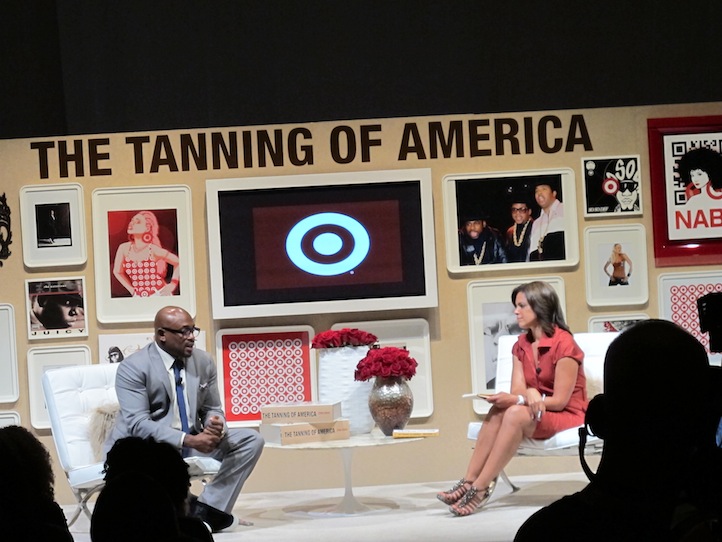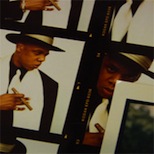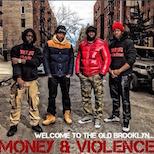Rewriting the Rules
09.08.2011
LEISURE

It’s been about a decade since Steve Stoute left his position as a music mogul to pursue advertising. In those last ten years, the former President of Urban Music at Interscope Records has permeated many facets of contemporary culture. From founding Translation Advertising to pairing some of entertainment’s most iconic figures with global brands, Stoute’s influence resonates through pop culture. His journey has led him to penning his first book, The Tanning of America: How Hip-Hop Created a Culture That Rewrote the Rules of the New Economy (Gotham Books), a tome that dissects the cultural nuances that hip-hop culture consists of, and how those same elements have influenced culture on a global scale. Here, Stoute defines the concept of the “tanning,” the effects of social media and how RUN-DMC were early trendsetters.
Life +Times : What is the overall concept behind the “Tanning of America?”
Steve Stoute: The tanning of America is a phenomenon that went beyond music in any genre, and went right into the psyche of young America. It’s blurred demographic and socio-economic lines and has created a transformation for generations to see each other not through color, but through shared values.
L+T: Do you see the culture being “tanned” overnight, or in pieces? Or is this a long-term thing?
SS: It’s going to take a while to affect the masses. There’s definitely a generation – definitively under the age of 20 – that have lived their life with the tanning effect. They consume, operate and live their lives under this pretense. It’s going to take a while before everybody and every brand understands how to get that kid in the door, into the market and sell to that consumer. It’s going to happen or it has to happen just for commerce to keep going forward. Because If you don’t get this kid aligned with your brand values or if this kid’s aren’t aligned with yours, you’re going to find yourself on the other side of consumption.
L+T: Who are the people that you see changing the face of this culture?
SS: I’ve interviewed a bunch of them for this series I’m doing on AOL/Huffington Post. The people that I’ve interviewed, that have really been effective, have been: JAY Z, Puffy, Justin Beiber, Will Smith, Lady Gaga, John Dempsey (CEO of Mac Cosmetics), Mariah Carey, Eminem, and Jennifer Lopez.
L+T: Early on in your book, you speak of RUN-DMC’s adidas-sponsored concert. Were you aware then that you were witnessing a cultural shift in brand allegiance?
SS: No, not at all. Back then when that happened, I don’t think anybody realized, that outside of shell-toed adidas being the shit, that what Run was doing was causing a seismic shift in the way a German company would look at street art – because that’s the way they were looking at it. [Hip-hop] wasn’t being looked at as a sustainable art form. And the way [Run] took that art and got the attention of a German company… I mean adidas wasn’t as big now as it was back then, but it still was a globally recognized brand. They felt that it was important to take a risk and be a part of this street art, this poetry. For adidas to take that risk and see that this new emerging artform was popular enough to do a brand endorsement deal with Run-DMC was a big statement that was heard around the world. The truth of the matter is that it’s not what it meant for me as a 16-year-old. I was already buying the product. I had a pair of shell toes. I was that guy who had that. I’m from Queens, RUN-DMC is from Queens. I’m a fan. But to me, specifically the issue comes into play when you start the discussing the implications that happened beyond Queens. What it meant to the footwear industry. When I speak about tanning, I don’t speak about from the perspective of how African-American culture, hip-hop culture, permeated through the rest of world. I speak about how hip-hop music created a culture that started a generation aligned to it. So what did it say to all those Germans and the German kids who grew up and finally got introduced to RUN-DMC via the sneaker. When I talk about tanning, I refer to sharing.
L+T: It’s been said that music effects the culture. But how have you seen culture influencing the music?
SS: As the culture started to become much more recognized, I think that a lot of the music that came out of it was geared towards those cultural cues. Whether it was champagne in the club or how you rock your car, or how you wear your clothes, I think those things are the cultural cues that are working and sticking – the music started to chase those cues. The truth of the matter is this is the way that the kids were brought up. Music videos were tutorials. It was, “how to videos.” In four minutes, you could learn how to speak to a girl, dance, drive your car, and how to rock your clothes.
L+T: How do you curate the musical connection with a product? For example, how did you know that Justin Timberlake was the right person for the McDonald’s “I’m Lovin’ It” campaign?
SS: I always felt that Justin was the Good Housekeeping seal of tanning. He appealed to African-Americans, he appealed to White kids. He lives in that space. I felt that when McDonald’s was launching that campaign, they needed an ambassador to relevant culture. I felt that “I’m Lovin’ It” – that line – sounded like ebonics. It felt like that to me; a play on slang. I felt that the person who could introduce that slang to world, would be the Good Housekeeping seal of tanning, and I felt that it was him.
L+T: How has social media impacted the tanning of America?
SS: It has sped up the process. It’s allowed people to culturally share much faster. The whole notion of why people don’t see eye-to-eye is really, at its core, about understanding. It’s the idea of, “I don’t understand you.” But how do you get a chance to understand people from afar? You just don’t. It’s unfortunate to fear what you don’t understand or not participate in it. What happened was there was a lack of understanding that led to a segregated point of view and created these boxes. And what the Internet did and what social media has done, is allowed people to share with each other their music, their culture, their food, their mannerisms. What hip-hop music did, and how it became a global phenomomen was that for the first time, there was an art form that spoke to everybody. It spoke about coming from nothing and being celebratory about it. People from around the world, Third World countries, understand what it’s like to not have shit. But before, you were always embarrassed not to have shit. Hip-hop was the first music form that said, “I don’t have shit, but I’m going to get some shit, and fuck that.” And everybody in China, Japan, Thailand, Haiti, South America is like, “Hell yeah!” Most other music that spoke about that was too niche – things that weren’t necessarily activating at the core of what people were talking about. They were either about love songs, or a relationship you were in. No one was talking about what I was like to be poor and what that felt like.
L+T: Where do you see this all going? Is there a point where there’s no longer a divide between a niche market minority-focused ad agency and a typical Madison Avenue “general market” firm?
SS: I don’t think there is going to be any more of that. I think you have to communicate with the consumers in culture and you have to speak to them in their cultural code. Trying to figure out, “Is it a general market agency, versus is it an African-American agency, versus a digital agency versus a young adult agency?” [is over]. All of those things have to come down to one thing: How effective are your tactics at speaking to the next generation of consumers? My end game is to get Madison Avenue, advertisers and brands to see that they have to speak to consumers going forward on a common values basis, not an “ethnic-friendly” basis. So, for example, I think it’s critical that we go to the Wal-Marts and CVS’s of the world and tell them to remove their ethnic beauty aisle. There’s no reason that Rihanna could be on the cover of Vogue magazine, and if a girl wants to use the product that [Rihanna] uses in her hair, she has to go to the ethnic beauty aisle. Women that are White, Spanish and Black, all look at her as beautiful. It’s not defined by ethnicity. She may have specific type of hair, but it’s not defined by ethnicity. (Tanning of America)
The Tanning of America: How Hip-Hop Created a Culture That Rewrote the Rules of the New Economy is in on sale now.





